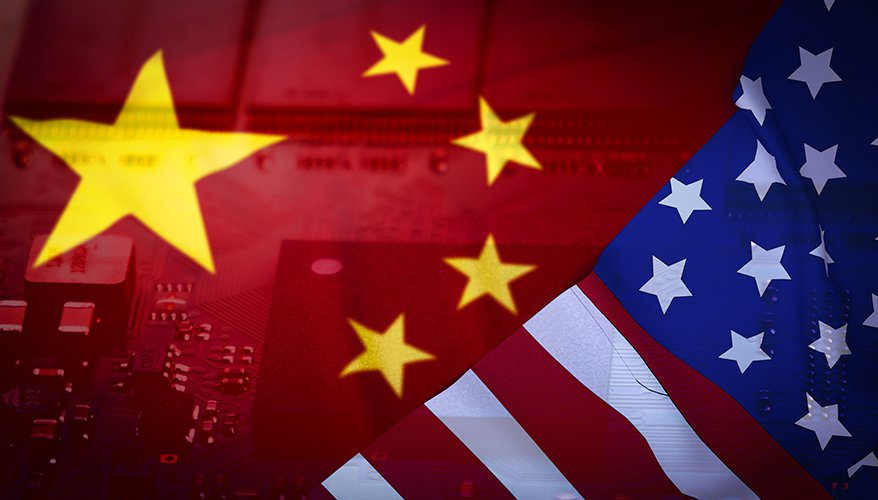Josh Luckenbaugh

The United States risks losing the technology competition with China if it doesn’t take significant steps to shore up its defense industrial base and integrate advanced capabilities into its military systems, according to a new report from commercial data company Govini.
In its 10th annual “National Security Scorecard” released July 17, Govini evaluated 12 technologies critical to national security using its Ark.ai commercial data platform, which the report described as “the first digital twin of the U.S. industrial base.”
Using artificial intelligence and machine learning to continuously enrich its dataset, Ark.ai “presents a digital representation of the companies, capabilities and capital that together form the industrial and innovation bases of the United States,” the report said. “By traversing these systems, analysts, managers and decision-makers in the national security sector are able to solve challenges that restore and strengthen America’s position in the competition with China.”
However, the picture of the industrial base Ark.ai currently paints is not encouraging for the United States, the report said. Govini found that in all 12 technology areas, “the United States is falling behind China in the core science as measured by the patents granted in each country.”
Patents are “a leading indicator of technological dominance in the future,” said Govini Chairman and former Deputy Secretary of Defense Bob Work. They are “the seed corn for making new discoveries that put you on the top of the competitive food chain. And that's what scares me the most: China's doing far better than us in terms of the overall number of patents.”
For most of the critical technologies, “the United States is largely stagnating in patents in these areas, [and] in many cases United States patent grants are actually declining,” Govini CEO Tara Murphy Dougherty said during the company’s release briefing for the report. And for the capabilities actually in development, the United States heavily relies upon Chinese suppliers, she said.
“This is not just a defense problem,” Dougherty said. “This isn't just a microelectronics problem. This is an overriding trend that spans all U.S. federal programs and activities.” All 12 of the critical technologies Govini analyzed “are highly dependent on Chinese entities for completing their projects, for developing their products, for bringing their goods and services to the market, and that market includes some of our most sensitive national security programs.”
One of those critical technologies is artificial intelligence, and over the last five years the United States’ total spending on AI has increased incrementally at best, even as “the technology advancements in AI have been staggering,” Dougherty said. Meanwhile, China has openly stated its commitment to be the global AI leader by 2032, and has granted patents for AI systems significantly faster than the United States in recent years, she added.
And when it comes to AI development, the Defense Department “is not actually the pacing spender, or setting the course on the trends that we see with respect to AI activity in the federal space,” she said. While that shows the United States sees the race for AI dominance as more than a military issue, the department has historically struggled “with aligning itself bureaucratically to really drive adoption and acceleration of AI within DoD activities and programs,” she said.
Dougherty noted the Defense Department’s Chief Digital and Artificial Intelligence Office “has been given a revamped mandate to … accelerate and adopt AI within the department,” and said she hopes the CDAO recognizes “how much room for acceleration there is, which … goes beyond simply spending to the outcomes that are driven by that investment.”
Beyond the fact the AI supply chain is heavily reliant on entities based in China “or in other adversarial countries,” the report also revealed the top U.S. vendors for AI “are the traditional defense contractors and traditional primes,” Dougherty said.
“There's a disconnect there,” she said. There is a need for the national security ecosystem “to attract and scale companies that are outside the Beltway and outside the traditional defense system, particularly in areas like artificial intelligence.”
Dougherty said that around five years ago, Govini analyzed the top 100 defense vendors and the top 100 AI companies, “and we found almost no overlap. Five years later … we've made very little progress, and while we might be attracting some of these non-traditional entrants into the defense procurement system to contribute to AI on national security problems, we certainly aren't scaling them, at least not based on these numbers.”
If the United States is to reverse the trend of falling behind China in critical technology competition, significant change is needed, she said. “Perhaps the change that's needed is a better model between the U.S. federal government from an R&D perspective in terms of what we nationally inspire, invest in [and] fund for R&D, versus what we're expecting to get out of the commercial sector from that same research-and-development perspective.”
Most research and development in the United States today is commercially funded, and to assure America’s place as the preeminent country for technologies like AI, the government must be more “strategic” about its research-and-development initiatives, “in addition to continuing to put investment where it needs to go given the stakes,” Dougherty said.
Work said China is doing everything it can to outpace and then catch and surpass the United States. “By 2049, they want to be the number one economy in the world and the number one military power in the world. Is that a future that the United States wants?
“I would hope not, and I would hope that we go into this and say, ‘This is an existential competition that we have to win, and we are going to make decisions based on data which gives us the best opportunity to win the competition,’” he said.
No comments:
Post a Comment